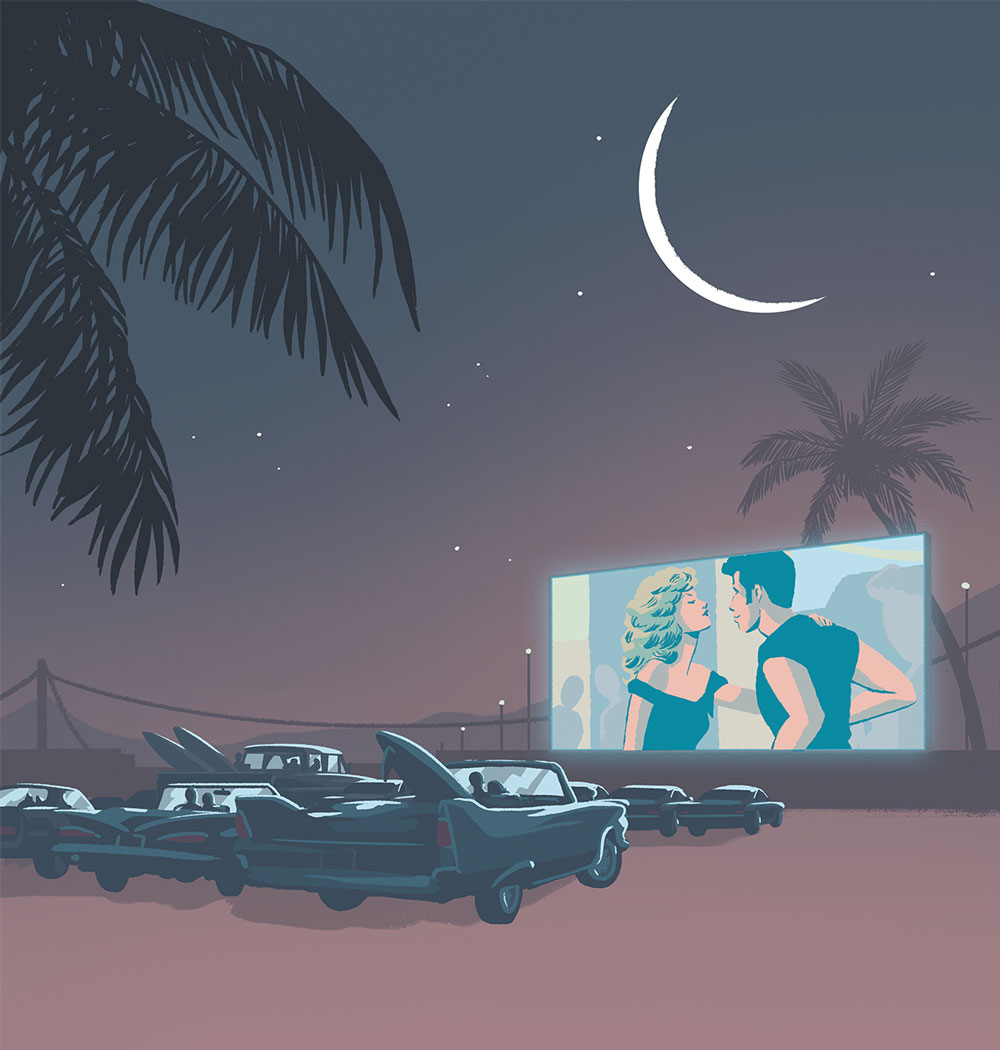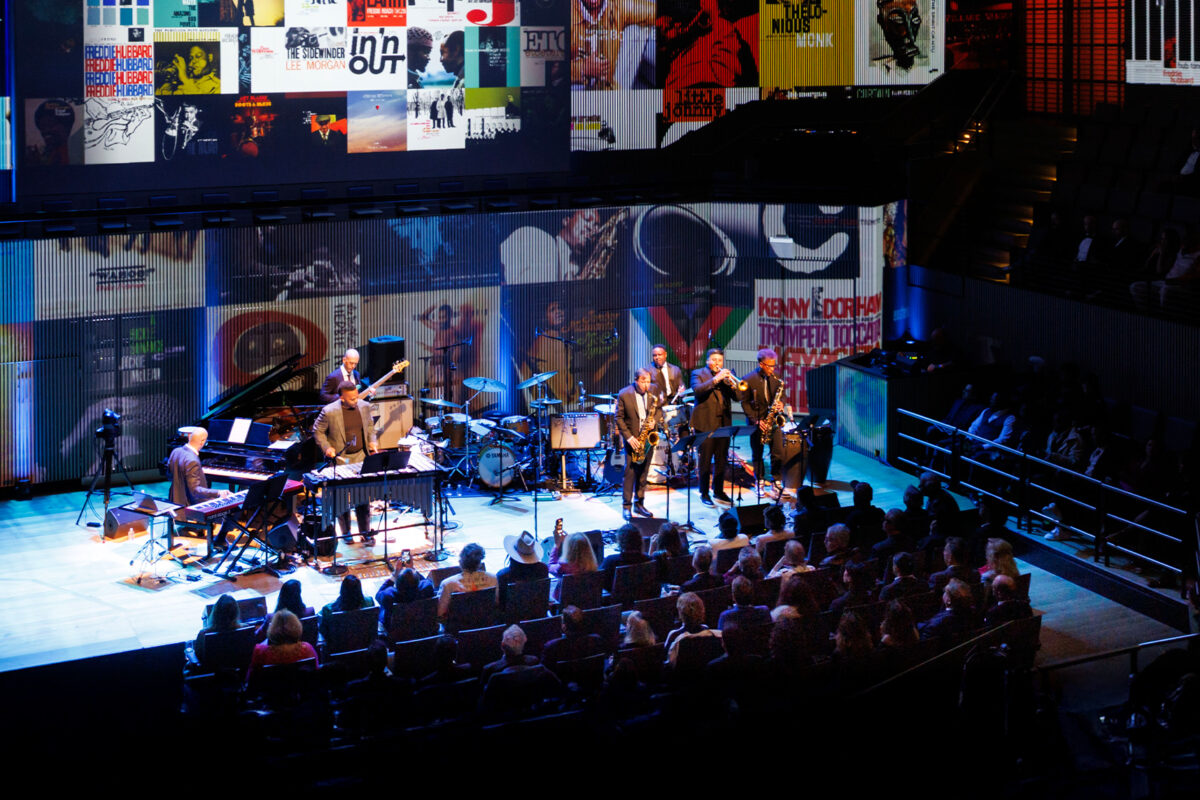From the women advancing music and sports, to industry scions with an eye toward space, The Golden State is taking on the future in full force
Words by STEPHANIE RAFANELLI
Illustrations by DEREK CHARM
Fall, like spring, is a time of renewal: The change in seasons offers a new beginning, a blank slate on which to define ourselves and our world afresh. As nature undergoes its own metamorphosis, so, too, are we offered another chance at change. And nowhere more so than in this land of eternal optimism. California, as we have come to know and love it, is perhaps less a place than a positive state of mind, forever forward-looking, striving for the new and improved.
The seeds of the future are so often sown in our soils. And if there has been any loss of faith during these unprecedented and challenging times, there are still reasons to be hopeful. This fall, California is sprouting with the green shoots of change in the spheres of design, culture, sports, travel, diversity and conservation, bolstering our belief in ourselves again.
Whether through nimble adaptations to our new present, preservations of our heritage, or radical technological breakthroughs that usher in the future, the innovative spirit of California is strong, always attempting to leave its positive imprint on the world — and now even the solar system — always reaching for a new and better age.
• • • • •
Life on Mars Starts in California
The state has a new set of rock stars. They might be anonymous on the street, but the implications of their innovative efforts for the human race are the most profound and far-reaching to date — about 33.9 million miles far to be exact. This year, the first phase of NASA’s Moon to Mars initiative took flight. On July 30, the Perseverance rover embarked on a mission to Mars’ Jezero Crater, once an ancient lake, to collect biosignatures, fossilized signs of former microbial life. It carries with it the carbon-light Ingenuity helicopter, a pathfinder that will scout Mars’ surface for future human routes. The mission will take more than a little piece of California with it: Both robots, along with their predecessor, Curiosity, were built at NASA’s pioneering Jet Propulsion Laboratory in Pasadena.
In March, NASA also announced that it is tapping four California-based companies for its Artemis project, which will send the next man and the first woman to the moon by 2024; and will aim to have sustainable missions at the lunar south pole by 2028.
Elon Musk’s Hawthorne-based SpaceX will resupply the agency’s Gateway in lunar orbit via cargo vessel Dragon XL and develop Human Landing Systems. Palo Alto’s Ceres Robotics and Mojave-based Masten Space Systems are also key collaborators. Artemis’ human team includes: Stanford and UCLA-educated Jessica Watkins, a postdoctoral fellow of the California Institute of Technology and chief NASA geologist; L.A.-born military pilot and flight surgeon Dr. Francisco Rubio; and native Angeleno Dr. Jonny Kim, a Navy Lieutenant at NASA who attended University of San Diego and later, Harvard Medical School. After years of lunar living, the Artemis team will be assigned to the first manned — or more likely, “woman-ed” — mission to Mars before 2030.
• • • • •
Our Condors Are Coming Home
The Californian wilderness is tentatively creeping back, and with it, near-extinct animals integral to Native American culture that once filled the western skies and roamed open plains. According to the California Department of Fish and Wildlife, gray wolves, viewed as mythological spirits by most indigenous cultures, were almost entirely eradicated here in the 1920s. But, this past June, the Lassen Pack, identified in 2017 as the only known pack in our state, was spotted with a litter of eight pups, making the family now 14 strong.
Meanwhile, California condors, endangered since 1967 — considered by some Native Americans to be great ancestors with shamanic power — are returning to their native nesting habitat in Sequoia National Park. Six were spotted this spring at Moro Rock and the Giant Forest.
The population of the largest flying birds in North America, which soar like ancient, winged priests over carrion, had dropped to 27 in 1987 due to lead poisoning from feasting on the remains of hunted animals. After captive breeding programs at the L.A. Zoo and San Diego Wild Animal Park (now the San Diego Zoo Safari Park), some were released back into the Los Padres National Forest in 1992. But for almost 50 years, they had yet to make it back home to the treetop safety of the towering Sequoias. Primordial nature is returning to its roots, reminding us of the respect our dignified predecessors once had for these lands.
• • • • •
The Getty Is the Global Guardian of Modernism
Modernism is sacred in California, less a design ethos, more a founding philosophy. It’s no surprise then, given our equal conversationalist bent, that a campaign to save the world’s forgotten 20th-century buildings has come from our shores. Established in 2014, the Getty Institute’s Keeping It Modern fund continues in this, its final year, with a $2.2 million grant to rescue 13 global feats of experimental modernism and rebel engineering from dereliction or demolition. Among this year’s grant winners is the Soviet-era futurist Buzludzha Monument, a cement flying saucer with a mosaic interior perched on a Bulgarian mountaintop in imminent danger of collapse.
Others include: Kuwait City’s Abraj Al-Kuwait water towers (resembling three jousts piercing watery planets of blue mosaics), designed in 1976 by Malene Bjørn with a glass- and aluminum-enclosed observation deck designed by American “space-itect” Buckminster Fuller; the CICES fairground, a shining, pyramidical example of post-Colonial African modernism in Dakar, Senegal; the 1966 Charles Correa-designed cricket stadium in India’s Ahmedabad; and seaside swimming pools designed by Pritzker Prize-winning architect Álvaro Siza in Portugal’s Leça da Palmeira. Hopefully, with the Getty Institute’s help, these weird and wonderful structures will be preserved for modernists’ bucket lists for decades to come.
• • • • •
The Drive-In Revolution Speeds Up
The extermination by Tinder et al. of romance — the kind experienced by our grandparents, at least — has long been the main gripe of singletons. That was until this past spring, when they instead lamented the impracticalities of social-distanced dating and the forlorn months of solo Netflix-watching when movie theaters closed. But out of today’s lemons we make lemonade. And out of the kernels of our present we make … popcorn!
This summer, a surge of pop-up drive-in theaters — the Baby Boomers’ preferred method of dating — across the state has provided a retro solution to social distancing and a joyful outlet for film nostalgists. The par exemplar? Grease, which was screened recently at San Fernando Valley Summer Drive-In. Torrance’s Roadium returned to its original purpose: a drive-in, originally opened in 1948.
Monterey and Alameda County Fairgrounds diversified into in-car movie theaters. The closed, indie Cameo Cinema in Napa’s St. Helena reopened, partnering with Gott’s Roadside burger joint. Even Amazon jumped on the bandwagon, sponsoring a film series celebrating diverse voices at Vineland Drive-In Theater, curated by Michael B. Jordan’s production company, Outlier Society. With programming continuing through fall, the drive-in is restoring old-fashioned romance to our viewing habits.
• • • • •
It’s All Change at San Francisco Opera
When Icelandic composer Hildur Guðnadóttir won Best Original Score for Joker at the Oscars — only the fourth female ever to do so — women in classical music hoped it signaled a sea change. Now that hope has been consolidated by the appointment of 39-year-old South Korean conducting sensation Eun Sun Kim as music director at the San Francisco Opera — the first woman to ever hold the post.
Kim is something of a Wonder Woman in the classical universe. She has scored global breakthrough after breakthrough since being awarded the First Prize in the International Jesús López Cobos Opera Conducting Competition at the Teatro Real in Madrid in 2008. The New York Times called her “a major star” after her American debut with Verdi’s La Traviata at the Houston Grand Opera in September 2017. In July, she led the famed Concert de Paris under the Eiffel Tower, a triumphant and rallying return to national life illuminated by fireworks. This is just the shape of things to come for California, when Kim begins her directorship next year.
• • • • •
Finally … Our Own Women’s Soccer Team
Californian women’s soccer has found its patron saints in newly established entity Angel City. The 33-strong ownership group of majority female power players from the worlds of sport, tech, finance and Hollywood are to debut an L.A.-based team. The diverse and formidable management includes Serena Williams, Natalie Portman, Jessica Chastain, Jennifer Garner, Uzo Aduba, Eva Longoria, America Ferrera, L.A. venture capitalist Kara Nortman, previous World Cup winners Mia Hamm and Abby Wambach, and 12 former national team players. Williams’ husband, Reddit co-founder Alexis Ohanian, and their 2-year-old daughter, Olympia, are also listed as investors, with media consultant Julie Uhrman acting as founder and president.
The team’s official name will be announced later in the year, but the goal is to be ready to compete in the National Women’s Soccer League’s 2022 season. Equality will be high on the agenda: Portman and Nortman met at a fundraiser and reconnected after the World Cup as the U.S. team fought for pay equal to their professional male counterparts. (Female players can earn as little as $20,000 a year.) Diversity will also be prioritized: Angel City will partner with LA84 Foundation, part of the #playequity movement, in support of programs for young athletes, particularly those of color. With an all-female hierarchy, the team is likely to be a game changer in more than just soccer.
A version of this story originally appeared in the September 2020 issue of C Magazine.
Discover more CULTURE news.









